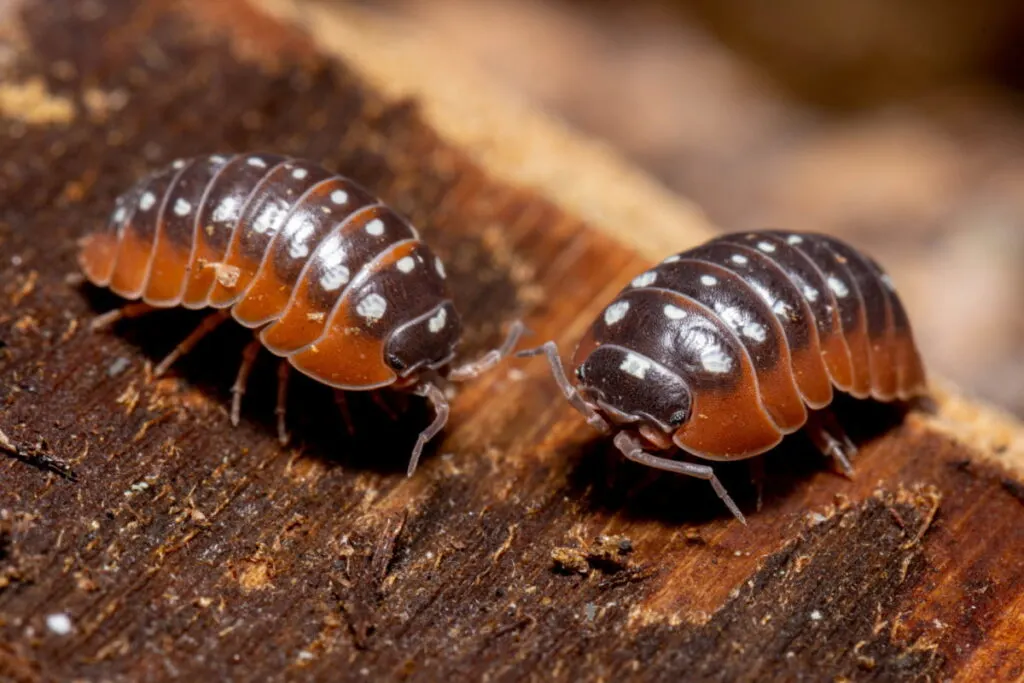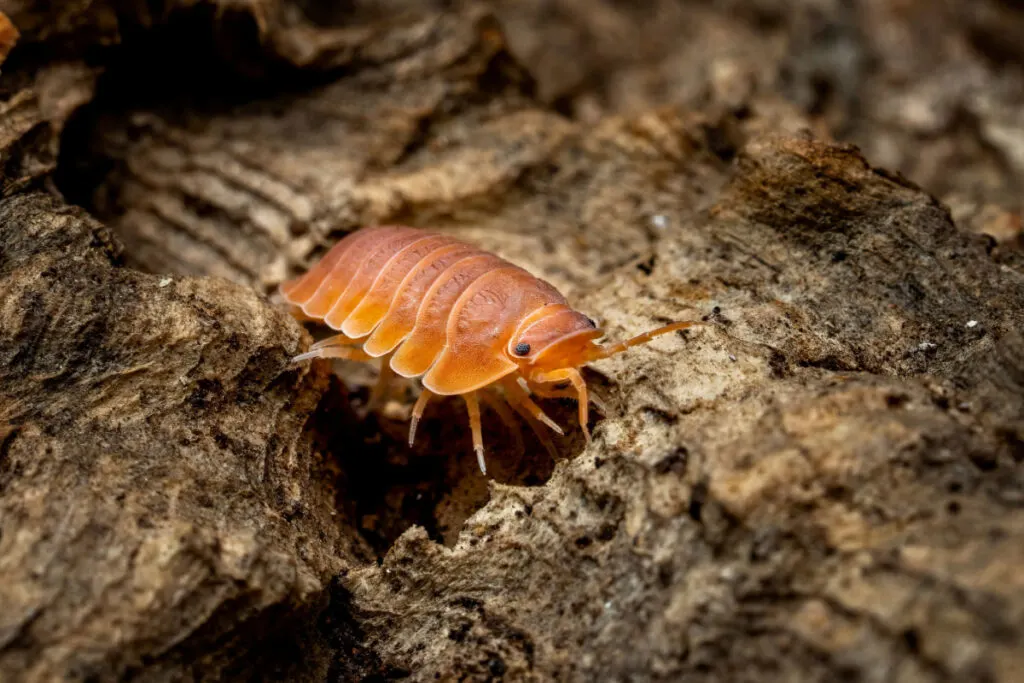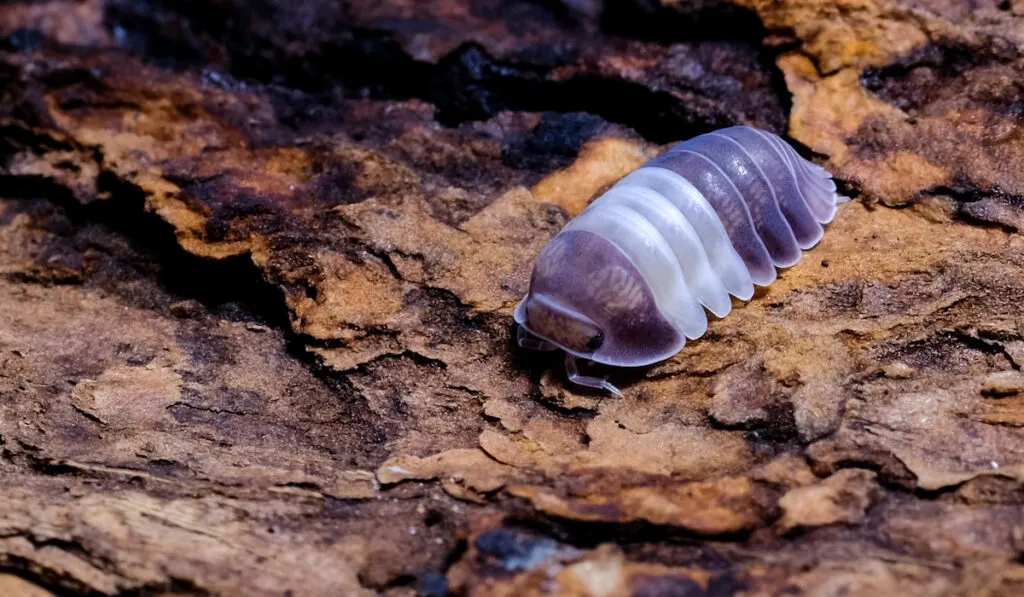Pillbugs are interesting arthropods that can grace your terrarium. When you properly care for your bugs, they will flourish in the tank and amaze everyone who looks at them.
But what if you find your pill bugs dead in their tank? Are they in fact dead?
Do pill bugs or isopods play dead?
To you, your isopods may be playing dead. To the isopods, however, they are expressing a defensive mechanism that can save their life in the wild.
Isopods do play dead for various reasons. Why do isopods play dead? Also, how can you tell if they are dead or not? We are going to cover the answers to these questions along with other questions you may have in the rest of this article.

Table of Contents
Do isopods play dead?
Isopods do play dead. But they’re not just playing around, they’re employing a very important defense mechanism. Here are some reasons your isopods may be playing dead:
- Too Much Light Exposure: Isopods love moving at night. As nocturnal organisms, isopods will be more active in their tank when there is no light. If you expose them to too much light, they may play dead – as in becoming inactive until the light gets dim.
- Shock: Did you disturb your isopods? If you or someone shakes the isopod container or disturbs them in a way, they may stop moving for some time.
- Your Isopods Are Weak: Maybe they are dying and not playing dead. In this case, you need to find the cause of their death.
As you can see, the major reason why your isopods “play dead” is when they are shocked. How does playing dead help save their lives?
Well, when predators see your isopods moving in the wild, they will hunt and eat them. To help save their lives, your isopods will stop their movement so that the predators cannot easily detect them.
If you feed your spiders with isopods, you’ll agree that isopods usually do not quickly get the attention of your spiders because spiders prefer quick-moving live organisms.
Just like spiders, there are many predators in the wild in which their hunting instincts might not activate when your isopods are immobile (i.e. playing dead). You may find it either cute or disturbing, but your isopods play dead for their lives.
What if you are raising isopods? How can you tell if they are playing dead or not?
How to Check If Your Isopods Are Dead or Not
Here are some easy methods to tell if your isopods are playing dead or not:
1. Using The Light Test

The light test is a very easy and reliable method to tell if your isopods are dead or not. To check your isopods with the light test, take the seemingly dead isopods into a dark room or turn off the light of their tank. If your isopods do not start moving after 2-3 hours, they may be dead.
Note that you should not monitor your isopods using a flashlight Instead, you should wait until 2-3 hours before you check if they moved or not.
2. Noticeable Population Decline
Sometimes, your isopods may be dying and not playing dead. In this case, you will know with long-term observation. Select a preferred time of the day (around 7-9 pm) to carefully observe your isopods when they are active.
Compare the population of your isopods a week or two after your initial day of observation. If their population dropped, your isopods might be dying and not playing dead. Make sure that you check your isopods at the same hour of the day.
3. Measuring the Food
Another way to tell if pill bugs are playing dead or not is by observing their food. If you can find your isopod food still lying in the tank after 3 days, your isopods might be weak and not playing dead. In this case, you should check the growing conditions to make sure that your isopods are in a suitable environment. Later in this article, we will discuss how you can properly care for isopods.
4. Count of Seemingly Dead Isopods

How many isopods are playing dead? If there are more isopods moving than those playing dead, it could mean that they are actually dead and not playing dead.
When predators and other factors cause isopods to play dead, almost the entire population plays dead and not just a select few.
Collect the seemingly dead ones and test them with other methods to find out if they are dead or not.
5. Presence of Mold
What is the ultimate test to find out if your isopods are dying or playing dead? The mold test.
If you can see mold in the entire isopod tank; including the feed and substrate, you can conclude that your isopods are dying.
To get the best result out of this test, make sure that you do not overfeed your isopods (better not to feed them at all). If you see a moldy isopod tank after 3-4 days of your isopods playing dead, you should dispose of the substrate and dead isopods in it.
6. Smell of Substrate
Decomposing organisms release several gases (including some harmful ones such as methane). They also make the tank stinky. If your isopod substrate smells so bad and you cannot find any mobile isopod in it at night, your isopods are not playing dead – because they are dead.
7. Wait Until Night Comes
Well, always remember that isopods are nocturnal. If the light test does not work, you should not immediately dispose of your isopods. Instead, wait until night comes to see if your isopods will move or not. If your isopods do not move at night, they are dead.
So many ways to tell if isopods are playing dead or not. What if your isopods are dying? How can you properly care for isopods so that they do not die (or so that they can stop dying)?
How to Properly Care for Isopods

Here are essential tips for isopods:
1. Housing
You can use any type of tank for your isopods. For aesthetics, however, you should go for glass or clear plastic tanks. Your isopod tanks should be 5 or more liters.
Note that the larger the tank, the happier your isopods will be.
Take note of ventilation. Perforate holes in the tank lid or use a wire mesh to make sure that air flows in and out of the tank freely. Also, do not keep the tank in a place where direct sunlight or near any heat-emitting appliance.
2. Feeding
Isopods eat various organic materials. Isopods prefer to eat their food when it is already decomposing, so it helps to introduce isopods into a tank with food already in it. You can feed isopods with anything that earthworms eat: decomposing leaves, fruits, grasses, flowers, etc.
Note that even if isopods can eat decaying animal parts, it is not advisable to feed your isopods with animal products.
3. Moisture
For isopods, moisture is key. “Moisture” does not refer to the humidity of the tank. Even if isopods prefer a richly-humid environment, “moisture” here refers to the moisture of their substrate.
Isopods are crustaceans and they breathe in dissolved oxygen. This means that isopods have gills (instead of lungs) and they can only breathe properly when their substrate is moist.
Your isopod substrate should never become dry or your isopods may start dying. Also, it should not be soggy or waterlogged and this could also cause your isopods to die.
4. Cohabitation
You can try raising isopods with other organisms. Make sure that you do not raise your isopods with predators or organisms that can harm them.
You can successfully raise your isopods with springtails, millipedes, snails, earthworms, small scavenger ants, etc. Creatures such as centipedes, lizards, and toads can eat your isopods.
5. Substrate
Your isopod substrate should be loam enriched with organic matter. The substrate should be humus-rich and moist. If you are raising your isopods with air-breathing animals, you should consider amending the substrate with sand so that the other organism does not suffocate in it.
With the care tips above, you should easily raise isopods with very little or no death.
Related Questions and Answers
1. Should You Feed Your Pets with Dead Isopods?
You should not feed your pets with dead isopods especially if you do not know why the isopods are dying. Your dead isopods may carry toxins that can harm your pet.
You should dispose of dead isopods and not feed them to your pets.

2. Can Your Isopods Eat Mold?
Isopods eat decomposing materials. Something common in decomposing materials is the presence of mold. It is inevitable for isopods to eat mold and other organisms in decomposing materials.
This does not mean that you should intentionally feed your isopods with mold. Do not overfeed your isopods so that their food does not become moldy. It is better to wait a day or two before feeding your isopods than to feed them immediately when you find their tank empty.
3. What Should You Do with Isopod Substrate?
If your isopod substrate has become waterlogged or is moldy, you should replace it. You can use your isopod substrate in your garden as a fine product for soil amendment. You can also use it to accelerate composting microbes.
Final Thoughts
Isopods can play dead, but you need to make sure that they are not acting. If you do not properly care for your isopods, they may die without you knowing because you might think that they are playing dead.
Thankfully, you can check your isopods if they are playing dead or not by using any of the various methods listed in this article.
